As Pacific salmon stocks continue to decline in their native ranges thanks to a toxic environmental cocktail that includes everything from poor fish management practices, fish migration barriers and climate change, it appears some salmon are finding and colonizing new habitat.
Fresh research from the University of Alaska-Fairbanks shows that chum salmon were discovered spawning in the Anaktuvuk and Itkillik rivers on Alaska’s North Slope this year. Both rivers are tributaries of the Colville River, which flows into the Arctic Ocean some 60 miles southwest of Prudhoe Bay.
According to UAF’s Peter Westley, the lead researcher on the project, the discovery of chum salmon so far north aligns with scientific theories that suggest salmon will move north as their traditional habitat declines in quality, either through direct human influence, or because of climatic changes.
“Throughout most parts of the salmon’s range, things have gotten too warm and they’re starting to blink off,” said Westley, an associate professor at UAF’s College of Fisheries and Ocean Sciences. “In the Arctic, the water is getting warm enough and they’re starting to blink on.”
Salmon moving north?
While salmon have been periodically present on the North Slope before, they aren’t common. The cold, pristine waters of the Arctic Ocean are home to large populations of native Arctic char, but salmon have always tended to be infrequent visitors.
“One major theme was that salmon have always been on the North Slope, but they’re also increasing in recent years,” said Elizabeth Mik’aq Lindley, a UAF graduate student who helped organize a workshop in 2022 that essentially kicked off Westley’s study. “I don’t want to portray our discovery as the first ever. That assumes no one has ever seen this before, and people have been there for thousands of years.”
The workshop, hosted by Alaska Sea Grant, helped steer Westley’s study and direct him to the North Slope in hopes of determining for certain that salmon are now using North Slope rivers for spawning.
The discovery of 100 chum salmon during the study reveals that, at the very least, there’s an attempt by the fish to find hospitable spawning and rearing habitat in areas where they haven’t been scientifically documented before (even if they have used the habitat previously).
“Straying is part of the biological story of salmon — it’s what they do,” Westley said. “It’s a fundamental part of their biology and evolution. In the Arctic, we can see it playing out before our eyes.”
What’s still unknown, however, is how successful the colonization is. It’s entirely possible that the two rivers where the spawning chums were discovered completely freeze up over the winter, which would likely kill any embryos left in the gravel from the spawn.
To learn more, Westley and his team have placed temperature monitors in some of the salmon redds to see just how cold the water gets over the winter. Additionally, the team is planning a return visit in the fall of 2024 to look for salmon smolts and a new wave of spawning adults.
Salmon declining elsewhere
The decline of salmon stocks throughout the north Pacific Ocean is well documented — stocks of chinook salmon are on the ropes from California to the Yukon-Kuskokwim Delta, where climate change is having a dramatic impact on habitat and survivability.
Indigenous people all along the Yukon and Kuskokwim rivers have depended on the annual salmon migration for subsistence, but harvest of salmon in both rivers was closed this year for the fourth year in a row. Both rivers have historically hosted massive runs of chinook and chum salmon and a dependable run of coho salmon, but the runs have all but disappeared.
In Cook Inlet southwest of Anchorage, a new study shows that there’s more than one culprit at play in the king salmon decline there. Yes, warmer ocean conditions definitely play a factor, but so, too, does the health of the rivers the big anadromous fish use for reproduction.
First, climate change is bringing more and heavier late-summer rain to the region, which increases flows and disturbs gravel and otherwise healthy salmon redds. Second, when water temperatures in inland rivers and streams used by kings for spawning get to be above 64 degrees Fahrenheit (about 18 degrees celsius), spawning productivity declines precipitously. In 2019, a year of record heat in Alaska, some spawning waters reached 80 degrees (26 degrees celsius) and killed thousands of spawning salmon.
It’s not just salmon
And salmon aren’t the only sea creatures that are apparently feeling the brunt of climate change in the northern Pacific. For the second year in row — and the second year ever — the commercial harvest of snow crabs is prohibited in Alaskan waters. Last year, it was discovered, billions of snow crabs in the eastern Bering Sea simply disappeared. According to the National Oceanic and Atmospheric Administration, the population crash is likely due to a lack of sea ice coverage in the Bering sea in the late 2010s, which reduced the “cold pool” that young crabs needed to grow and reach harvestable size.
In other words, warming ocean waters due the climatic changes have devastated one of the most lucrative commercial fishing stocks in the world.
Better habitat elsewhere?
While it appears possible for troubled salmon populations to pioneer new and presumably more hospitable habitat in the Arctic, snow crabs aren’t migrating to northern waters.
According to the NOAA study, the snow crabs that crashed in the eastern Bering Sea didn’t “redistribute.” Rather, extremely warm water temperatures in 2018 and 2019 “exceeded the cold-water temperature preferences of juvenile snow crab,” the study claims.
“We are not able to identify whether the decline is a direct effect of warming on survival of juveniles that require cold water habitat,” said Erin Fedewa, a NOAA fisheries biologist. “But it is a red flag. We need continued monitoring and targeted studies to better understand snow crab vulnerabilities to climate change.”
Perhaps salmon can be more opportunistic than their crustacean neighbors. The documented discovery of a spawning run of chum salmon in the Colville River drainage might be proof biologists need to show that, as habitat health declines in some areas due to climate change, other habitats open up.
The Arctic has traditionally lacked dependable salmon habitat, but that may be changing in a warming world.
“You’re seeing a place where these relationships might be starting,” Westley said.




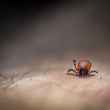





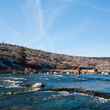
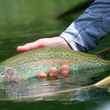



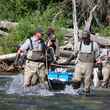
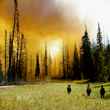



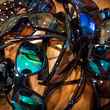
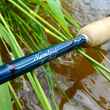



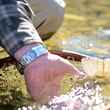
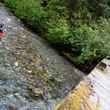


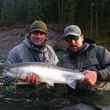
Comments
No1Hunter replied on Permalink
Climate change, eh. So, salmon are rather new to the Pacific Northwest, like less than 15,000 years? Climate has been changing here forever! The whole Columbia River system was blocked by ice for many, many years, which stopped all migration of the salmon.
The biggest impact on salmon is overfishing, both the salmon and their food sources. Millions leave the rivers, but none come back. But, no one wants to address the real issue, overfishing in the ocean. Shut it down for 5 or 10 years and see what happens. You will have more salmon in the rivers than you will know what to do with.
Pages